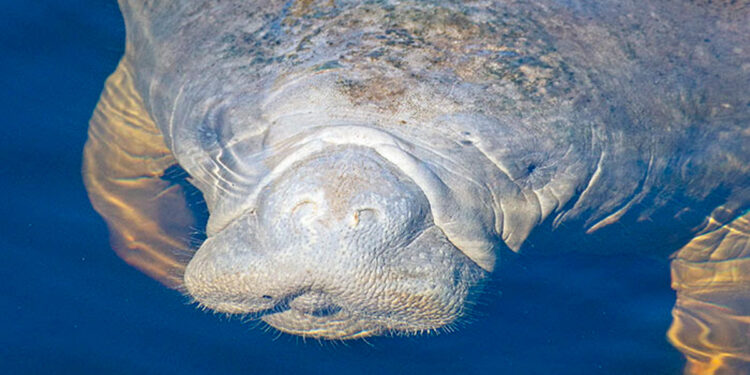Spring has sprung, and the Florida Fish and Wildlife Conservation Commission (FWC) has a gentle nudge for boaters: ease up on the throttle and keep your eyes peeled for manatees.
As temperatures climb, these lumbering sea cows are on the move near the St. Sebastian River, Indian River Lagoon, and the Intracoastal Waterway.
Manatees spend the colder months hunkered down in Florida’s springs, power plant discharges, and other warm spots where the water stays above 68 degrees Fahrenheit. That means boaters and jet-skiers are more likely to cross paths with them—whether they spot them or not.
Catching sight of a manatee isn’t always easy. Their gray, wrinkled hides blend into murky waters, and they’re not exactly known for speed.
“Going slow and looking out below gives you a better shot at seeing them,” an FWC spokesperson said.
One trick is to use polarized sunglasses, which allows you to see below the water line. Watch for telltale signs like a snout breaking the surface or those big, swirling “footprints” they leave on the water, and steer clear of any manatee protection zones marked by signs.
From April 1 through November 15, seasonal speed zones kick in across parts of Florida’s waterways. These rules aren’t just suggestions—they’re there to keep manatees from getting sliced up by propellers or smashed by hulls.
Boat strikes remain one of the biggest threats to these gentle giants, and FWC officers will be patrolling to make sure folks follow the posted signs.
Here’s the deal: manatees are protected by law. Feeding them, harassing them, or worse, harming them is a no-go. If you spot one in trouble—whether it’s injured, stranded, or just looking off—don’t play hero.
“Trying to handle a distressed manatee can hurt it more and might land you in a world of hurt too,” the FWC warns. Instead, call the Wildlife Alert Hotline at 888-404-FWCC (3922) and let the pros handle it.
For guidelines for safe baotings and viewing tips, visit the FWC’s manatee website.
You can also help fund research, rescues, and management efforts by purchasing a manatee license plate or a $5 FWC manatee decal at the local Tax Collector’s office.







